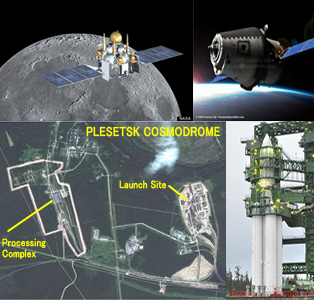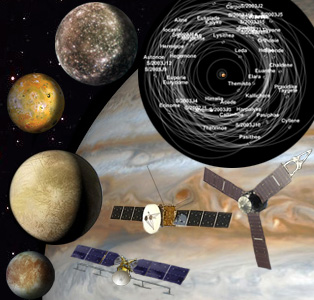Russia Set for Maiden Flight of Angara Heavy-lift Rocket
Angara-A5, the heavy-lift configuration of this modular rocket system 20 years in the making, is scheduled to lift off from Plesetsk Cosmodrome about 800 km north of Moscow on December 25, for its maiden flight to orbit. This is the first newly developed post-Soviet Russian rocket family. It is built by the Khrunichev State Research and Production Space Center based in Moscow, runs on eco-friendly oxygen-kerosene fuel, and is capable of lifting 24.5t to LEO, or as much as 7.5t to GTO. Russia has been boosting efforts to revitalize its space program by increasing budget allocations over the last few years, a trend that may be challenged by the unfolding economic situation. In addition to outlining plans for a full-scale Moon exploration program in 2016-2025, it is planning or actively developing new launch vehicles like Angara, a new launch site at Vostochny, a new manned spacecraft called PTKNP, new planetary missions, and a new national space station to serve as waypoint for human Moon missions. Oleg Ostapenko, head of Roscosmos, recently cited that Russia has launched 37 satellites in 26 missions this year, almost twice as many as in 2013. The new Vostochny space center in the far east is set for completion in July 2015, despite reports of delays in construction, and will be a major boon as it alleviates Russian reliance on the Baikonur site leased from Kazakhstan. Further flight tests of the Angara rocket are scheduled in 2016. (Image Credit: Roscosmos, A. Zak, Google Earth)
|
MONDAY
|

![]() = All times for terrestrial events in local time unless noted.
= All times for terrestrial events in local time unless noted.
![]() = All times for international terrestrial events in local time unless noted.
= All times for international terrestrial events in local time unless noted.
![]() = All times for space events, and…
= All times for space events, and…
![]() = All times for international space / astro events in Hawaii Standard Time unless noted. Add 10 hours to obtain UT (‘Universal Time;’ Greenwich, England).
= All times for international space / astro events in Hawaii Standard Time unless noted. Add 10 hours to obtain UT (‘Universal Time;’ Greenwich, England).
Weekly Planet Watch – Evening Planets: Venus (SW), Mars (SW), Jupiter (ENE); Morning Planets: Saturn (SE).
Jupiter Spacecraft Paving Way for Future Human Missions
|
Continued from…
TUESDAY
WEDNESDAY
THURSDAY
|
FRIDAY
![]() Dec 26 — RSA, Launch Soyuz / Resurs P2, Baikonur Cosmodrome, Kazakhstan: Soyuz rocket to launch Resurs P2 Earth observation satellite to collect remote sensing data for Russia government agencies and international customers.
Dec 26 — RSA, Launch Soyuz / Resurs P2, Baikonur Cosmodrome, Kazakhstan: Soyuz rocket to launch Resurs P2 Earth observation satellite to collect remote sensing data for Russia government agencies and international customers.
![]() Dec 26 — Space Center Houston, Houston TX: Lunch with an Astronaut, Brian Duffy; US$49.95 adult.
Dec 26 — Space Center Houston, Houston TX: Lunch with an Astronaut, Brian Duffy; US$49.95 adult.
![]() Dec 26 — Venus: At aphelion (108,937,169 km from Sun), 14:00.
Dec 26 — Venus: At aphelion (108,937,169 km from Sun), 14:00.
![]() Dec 26 — Asteroid 2014 XJ3: Near-Earth flyby (0.032 AU).
Dec 26 — Asteroid 2014 XJ3: Near-Earth flyby (0.032 AU).
SATURDAY
![]() Dec 27 — 30th Anniversary of ALH84001 Meteorite Discovery: ALH84001 Meteorite (Mars Meteorite) discovered 1984 in Allan Hills, Far Western Icefield, Antarctica, this meteorite caused excitement about possibility of life on Mars.
Dec 27 — 30th Anniversary of ALH84001 Meteorite Discovery: ALH84001 Meteorite (Mars Meteorite) discovered 1984 in Allan Hills, Far Western Icefield, Antarctica, this meteorite caused excitement about possibility of life on Mars.
![]() Dec 27 — University of Texas at Arlington, Arlington TX: Back to the Moon for Good; film depicting Google Lunar XPRIZE race to Moon and the human stories of both competition & collaboration it inspires.
Dec 27 — University of Texas at Arlington, Arlington TX: Back to the Moon for Good; film depicting Google Lunar XPRIZE race to Moon and the human stories of both competition & collaboration it inspires.
SUNDAY
![]() Dec 28 — RSA, Launch Proton / ASTRA 2G, Baikonur Cosmodrome, Kazakhstan: ILS Proton rocket to launch ASTRA 2G communications satellite for SES of Luxembourg.
Dec 28 — RSA, Launch Proton / ASTRA 2G, Baikonur Cosmodrome, Kazakhstan: ILS Proton rocket to launch ASTRA 2G communications satellite for SES of Luxembourg.
![]() Dec 28 — Moon: At first quarter, 08:32; 1.3° WNW of Uranus, 19:00.
Dec 28 — Moon: At first quarter, 08:32; 1.3° WNW of Uranus, 19:00.

